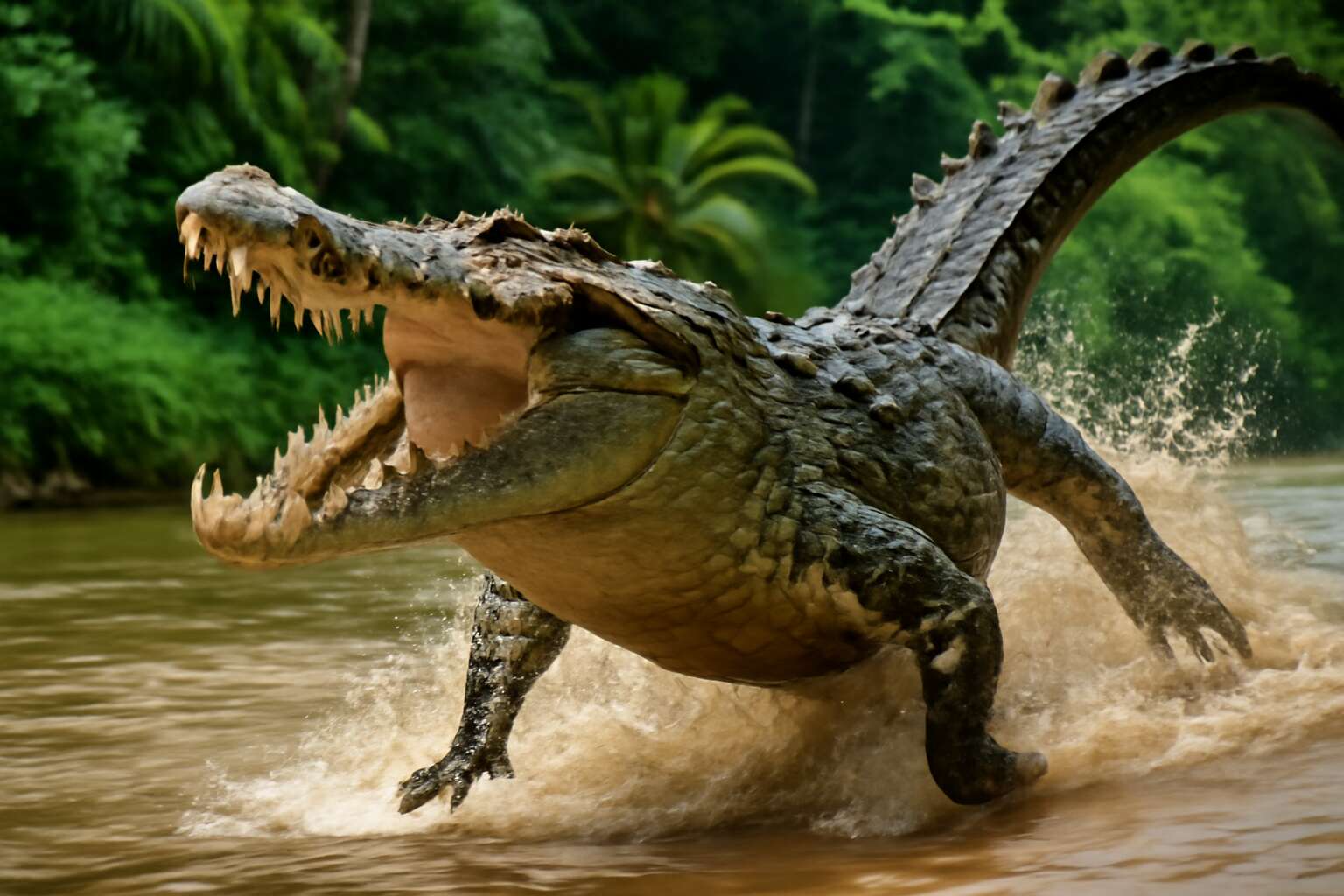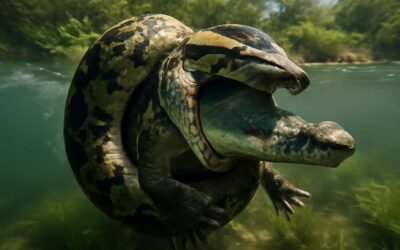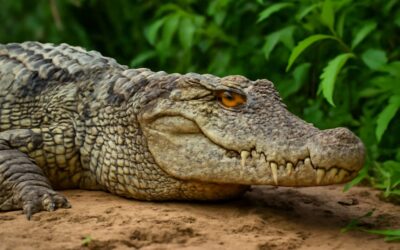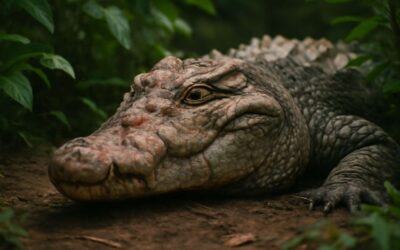Understanding Crocodile Movement and Speed
Anatomy of a Crocodile’s Limbs and Tail – Exploring how a crocodile’s physical features contribute to its mobility
When it comes to the astonishing ability of crocodiles to burst into motion, understanding their movement and speed anatomy is essential. These ancient predators are often underestimated, yet they possess a remarkable combination of strength and agility that enables them to achieve impressive bursts of speed. A crocodile’s physical features, especially its limbs and tail, play a pivotal role in their top speed capabilities.
The limbs of a crocodile are short but powerful, designed more for propulsion than endurance. Their muscular legs act like pistons, providing thrust during rapid pursuits or ambushes. Meanwhile, the tail is a formidable tool—long, muscular, and highly flexible—serving as both a stabiliser and a primary source of propulsion. When a crocodile accelerates, it uses a sideways sweeping motion of the tail to generate thrust, propelling itself forward with surprising force.
Exploring the anatomy further, the crocodile’s tail accounts for a significant portion of its overall speed, allowing it to reach up to 30 km/h in short sprints. This combination of limb strength and tail agility makes the crocodile a master of quick bursts, rather than sustained speed. It’s this unique adaptation that keeps these predators at the top of their game, despite their seemingly sluggish appearance.
How Crocodiles Move in Water Versus Land – Comparing their swimming versus terrestrial movement mechanisms
When it comes to understanding the remarkable crocodile top speed, it’s fascinating to see how their movement varies dramatically between water and land. In aquatic environments, these ancient predators are surprisingly agile, using their powerful tails to propel themselves forward with a wave-like motion that’s both efficient and deadly. Their streamlined bodies and webbed feet help reduce water resistance, allowing them to reach speeds of up to 32 km/h in short bursts—fast enough to turn a leisurely swim into a lightning-fast ambush.
On land, however, things are a bit more sluggish, yet still impressive. Crocodiles can attain a top speed of around 30 km/h in brief sprints, thanks to their muscular limbs and tail aiding in rapid acceleration. Unlike their graceful water dance, terrestrial movement involves a sprawling gait that’s more about explosive bursts rather than sustained speed. To put it simply, if you’re ever feeling brave enough to race a crocodile, you’d better be quick—because these formidable creatures can unleash their top speed faster than you can blink!
Factors Influencing Crocodile Speed – Environmental and physiological factors impacting top speed
Understanding what truly influences the crocodile top speed reveals a captivating interplay of environment and physiology. These ancient predators are finely tuned to their habitats, with speed being a critical factor for both survival and hunting success. While their muscular build and powerful tail are central to their agility, external elements can dramatically alter their ability to sprint or swim with lethal efficiency.
Environmental conditions, such as water temperature and terrain, can either boost or hinder their top speed. Warmer waters tend to enhance muscle performance, allowing crocodiles to reach near their maximum velocity. Conversely, on land, the substrate’s firmness plays a role; a muddy or uneven surface can slow their explosive bursts. Physiologically, factors like age, health, and even time of day impact their speed, making each encounter uniquely unpredictable. For instance, a well-fed, healthy crocodile can unleash its full potential and reach impressive speeds that leave prey or predators in awe.
- Physical condition and age
- Environmental temperature and terrain
- Level of motivation, such as hunting or threat response
Crocodile Species and Their Speed Capabilities
Nile Crocodile – Top speed details and hunting techniques
Among the most formidable predators lurking in the murky waters of Africa and Australia, the Nile crocodile commands awe with its remarkable blend of power and stealth. While these ancient beasts are often heralded for their patience and ambush tactics, their *crocodile top speed* during a sudden burst of pursuit is nothing short of staggering. It is said that a Nile crocodile can reach speeds of up to 20 miles per hour on land, a feat that surprises many who associate them solely with their languid, lurking presence.
In their aquatic realm, the crocodile’s *crocodile top speed* is even more impressive. With streamlined bodies and muscular tails, they can propel themselves through water with astonishing agility, reaching speeds of around 22 miles per hour. This swift movement is essential for their hunting techniques, which often involve explosive lunges from the water’s edge or beneath the surface. Their ability to accelerate rapidly enables them to ambush prey with deadly precision, turning the tide of the hunt in moments that seem almost mythical.
Saltwater Crocodile – Speed comparisons and ecological adaptations
The saltwater crocodile, often regarded as the apex predator of its domain, commands both awe and respect for its remarkable speed capabilities. Unlike many creatures that rely solely on stealth, the saltwater crocodile’s *crocodile top speed* showcases its prowess in both aquatic and terrestrial pursuits. With a body built for explosive bursts of movement, it can achieve speeds of up to 25 miles per hour in short sprints, making it one of the fastest reptiles on land.
This speed is not just a marvel of evolution but a testament to its ecological adaptations. The saltwater crocodile’s muscular limbs and streamlined physique enable rapid acceleration, vital for ambushing prey or defending territory. In water, their *crocodile top speed* reaches approximately 20 miles per hour, aided by powerful tails that propel them with incredible agility. This dual capacity for swift movement in two environments underpins their position as formidable predators, capable of striking with deadly efficiency in moments that seem almost surreal.
American Crocodile – How its speed measures up
The American crocodile, often overshadowed by its more notorious relatives, still commands attention with its surprising speed capabilities. Unlike the Nile or saltwater crocodile, this species relies on a blend of stealth and sudden bursts of power to secure its prey. Its *crocodile top speed* in the water can reach up to 20 miles per hour, a swift dash for a creature of such size and bulk. On land, however, its pace slows significantly, but it can still accelerate rapidly enough to surprise unsuspecting prey or deter threats.
Interestingly, the American crocodile’s speed varies depending on environmental factors. In warmer waters or during hunting season, their agility peaks, allowing quick lunges and pursuit. They are capable of short, explosive sprints, making them formidable predators despite their more measured demeanour in calmer moments. For those fascinated by crocodile speed, observing their quick bursts during hunting reveals just how adept these reptiles are at exploiting their environment for survival.
Other Notable Species – Brief overview of less common crocodile species
Beyond the well-known giants like the Nile and saltwater crocodiles, several lesser-known species showcase intriguing variations in their speed capabilities. The Cuban crocodile, for example, is renowned for its agility and bursts of speed that rival some of the more celebrated crocodile species. Unlike its counterparts, it employs a combination of stealth and rapid acceleration to hunt effectively in its freshwater habitats.
Another fascinating member of the crocodile family is the New Guinea crocodile. While its *crocodile top speed* remains less documented, anecdotal evidence suggests it can reach remarkable speeds during short pursuits. These crocodiles often rely on quick lunges rather than prolonged chases, highlighting their specialised hunting strategies.
For those intrigued by the diversity within crocodilian speed, here’s a quick overview of other notable species:
- West African crocodile – Known for its adaptability and quick strikes in murky waters.
- Siamese crocodile – A more reclusive species, but capable of surprising bursts of speed when threatened.
- Philippine crocodile – Small but fierce, with speed bursts used in close encounters.
While these species might not have the same reputation for speed as the Nile or saltwater crocodile, their unique adaptations and hunting tactics demonstrate just how varied and fascinating the world of crocodiles truly is. Each species’ *crocodile top speed* plays a crucial role in their survival, whether lurking in shallow waters or stalking prey along riverbanks.
Maximum Speed of Crocodiles
Reported Top Speeds in the Wild – Scientific studies and observed speeds
When considering the formidable prowess of crocodiles, their top speed in the wild remains a subject of both awe and scientific intrigue. Some studies suggest that the crocodile top speed can reach up to 17 km/h (about 10.5 mph) in short bursts, a remarkable feat given their bulky frame. This speed, observed during hunting pursuits, highlights their incredible burst capacity rather than sustained movement. It’s as if nature has crafted these predators with a built-in surprise — a sudden, explosive strike that leaves prey with little chance of escape.
Field observations and scientific reports consistently confirm that while crocodiles are not long-distance sprinters, they excel in rapid ambush tactics. Their ability to accelerate from a standstill is what makes the crocodile top speed such a lethal advantage. In the context of their environment, such speed is not just about raw power; it’s an existential tool for survival. The difference between a crocodile’s slow, deliberate crawl and its swift, predatory dash underpins the delicate balance of their predatory mastery.
Speed During Hunting and Attacks – How speed enhances hunting success
In the tense ballet of predator and prey, a crocodile’s top speed during hunting is nothing short of astonishing. When momentum shifts in their favour, these ancient hunters can surge forward with explosive force, reaching speeds of up to 17 km/h (about 10.5 mph). This rapid acceleration, although fleeting, is their secret weapon against unsuspecting prey, transforming a seemingly sluggish silhouette into a lethal streak of power. The crocodile top speed is not about endurance but about delivering a decisive, lightning-fast strike.
During an attack, the crocodile’s swift burst of speed is complemented by its stealthy approach, making it a master ambush predator. Its ability to accelerate from a complete standstill enables it to close the distance rapidly, often catching prey completely off guard. This remarkable speed—paired with their formidable jaw strength—enhances hunting success significantly. The crocodile top speed, therefore, isn’t just a number; it’s a critical factor in their survival mastery in the wild.
Laboratory and Experimental Data – Controlled testing results and accuracy
When it comes to the crocodile top speed, laboratory and experimental data reveal some fascinating insights. Controlled testing has allowed scientists to measure these ancient predators’ true capabilities, beyond the myth and folklore. In carefully monitored environments, crocodiles have been clocked reaching speeds of up to 17 km/h (about 10.5 mph), a figure that surprises many given their normally sluggish appearance.
These experiments involve high-speed cameras and tracking technology that precisely capture every burst of power during a sprint. Interestingly, the crocodile top speed isn’t about endurance but about delivering a lightning-fast strike that leaves prey in the dust. It’s worth noting that such speeds are usually sustained only for a brief moment, but that’s all they need to turn the tide of a hunt.
In fact, some research organisations have employed
- laser measurement tools
- motion sensors
to ensure the accuracy of their results. These scientific efforts consistently confirm that the crocodile top speed hovers around 17 km/h, making it a formidable ambush predator. While not the fastest land animal, their explosive speed during hunting demonstrates a remarkable adaptation that often catches prey completely off guard.
Factors Affecting Crocodile Speed
Age and Size – How maturity influences speed
Age and size are powerful influencers on a crocodile’s top speed, shaping its hunting prowess and survival chances. Juvenile crocodiles, still honing their physical capabilities, typically showcase modest speeds — often around 12 to 15 km/h — insufficient for a swift ambush. As they mature, their size increases exponentially, and so does their ability to generate force and momentum. Mature crocodiles, especially those in prime condition, can reach impressive top speeds, often exceeding 30 km/h in short bursts. This acceleration is crucial during high-stakes pursuits, whether chasing prey or defending territory.
Interestingly, the relationship between age, size, and speed isn’t linear. Younger crocodiles are more agile but less powerful, while older specimens, having accumulated mass, can exert more force but may sacrifice a fraction of their agility. For a predator relying on stealth and sudden bursts of speed, these factors must align perfectly.
- Size contributes to increased muscle strength
- Age enhances muscle memory and coordination
The interplay of these elements determines the crocodile’s effectiveness as a top predator in its environment, making their top speed a fascinating subject of study in both ecology and evolutionary biology.
Health and Physical Condition – Impact of injuries and fitness
The pursuit of understanding the crocodile top speed often feels like chasing a myth wrapped in scales—yet, injuries and physical fitness play a surprisingly pivotal role in how fast these ancient predators can go. A healthy, uninjured crocodile can unleash a burst of speed that might leave prey trembling, but even minor wounds or fatigue can turn a cheetah’s cousin into a sluggish swamp dweller. Unlike humans, their speed hinges less on cardio and more on the integrity of their armour.
When a crocodile is in prime condition, its muscles are optimally tuned for explosive action, enabling it to reach impressive speeds of over 30 km/h during short sprints. Conversely, an injured or lethargic croc’s top speed can plummet dramatically, making them less effective hunters and more vulnerable to threats. The delicate balance between fitness and injury directly influences their ability to perform high-speed pursuits, underlining that even the mightiest predator isn’t invincible—just remarkably fast when healthy.
Environmental Conditions – Water temperature, terrain, and habitat effects
The furious burst of a crocodile’s top speed is a fleeting spectacle, yet it is profoundly influenced by the environment that cradles these ancient predators. Water temperature, often underestimated, can either invigorate or sap their sprints—warmer waters tend to loosen muscles and sharpen reflexes, allowing for that exhilarating burst of over 30 km/h. Conversely, cooler conditions can slow their stride, turning a swift predator into a sluggish creature of the swamp.
Habitat intricacies—such as the terrain they traverse—also play a pivotal role. Crocodiles on muddy banks or dense mangroves might be hindered, their agility dampened by uneven ground, while those in open waters or sandy shores can unleash their full potential. The interplay of these environmental factors paints a vivid mosaic of their top speed capabilities, reminding us that even the most formidable predator’s velocity is subject to nature’s whims and whispers.
Behavioral Aspects – Aggression levels and hunting tactics
The ferocity of a crocodile’s top speed is not solely dictated by its physique but also intricately shaped by behavioural nuances that define its predatory prowess. An animal driven by instinct and hunger often exhibits bursts of astonishing velocity, crucial during a swift ambush or an aggressive confrontation. When a crocodile perceives threat or opportunity, its aggression levels can escalate, triggering an adrenaline-fuelled sprint that can surpass 30 km/h in a blur of feral energy.
Hunting tactics further influence the crocodile’s top speed. Ambush predators rely on sudden, explosive movement rather than sustained speed, yet during these moments, their agility becomes almost mythic. A predator’s level of hostility can prompt it to push beyond typical limits, unleashing a remarkable burst that momentarily defies its otherwise lethargic reputation. The interplay of aggression and strategy creates a dynamic, unpredictable component to their speed, making each chase a fleeting yet captivating spectacle.
Comparisons with Other Reptiles and Predators
Crocodiles vs Alligators – Differences in speed and agility
In the shadowy realm of reptilian prowess, few creatures evoke the same blend of raw power and stealth as the crocodile. When comparing crocodile top speed to that of other reptiles and predators, a fascinating mosaic of evolutionary adaptation unfolds. Unlike their swift avian counterparts or agile lizards, crocodiles tend to rely on explosive bursts of speed during predatory strikes rather than sustained velocity. Their top speed, which can reach up to 17 km/h (11 mph), is impressive considering their bulky frame but pales in comparison to some fast-moving predators.
Among the reptilian lineage, alligators, for instance, generally exhibit a marginally slower crocodile top speed, although their agility on land complements their aquatic agility. Crocodiles’ robust limbs and muscular tail provide a powerful means of propulsion, yet their speed remains tailored for ambush rather than chase. In contrast, predators like the monitor lizard or certain snakes depend on rapid, darting movements, often surpassing the crocodile in short-distance agility. This contrast underscores that crocodiles excel in stealth and sudden strikes, rather than prolonged pursuit, a behavioural trait rooted in their evolutionary niche.
Crocodiles vs Dolphins – Aquatic speed comparisons
In the submerged theatre of predator and prey, the crocodile’s top speed emerges as a fascinating testament to evolutionary finesse. Unlike the swift, streamlined dolphins that carve through water at astonishing velocities, crocodiles are designed for explosive ambush rather than prolonged pursuit. Their maximum aquatic speed, approximately 17 km/h (11 mph), reveals a creature built for sudden bursts of power rather than endurance. This stark contrast underscores the crocodile’s predatory strategy: patience, stealth, and swift, decisive strikes rather than relentless chase.
When comparing crocodile top speed to other aquatic predators, the difference becomes even more pronounced. Dolphins, renowned for their streamlined bodies and powerful tail muscles, can reach speeds of up to 55 km/h (34 mph), making them some of the swiftest marine mammals. In contrast, the crocodile’s rugged physique, equipped with muscular limbs and a formidable tail, excels in short, rapid lunges that catch prey unaware. This disparity highlights an intriguing dichotomy—crocodiles are masters of ambush, leveraging their stealth and explosive power over sheer speed, illustrating a behavioural divergence rooted deep within their evolutionary history.
Crocodiles vs Large Fish – Top speed in prey and predators
When comparing crocodile top speed to other formidable aquatic predators, the differences are striking and reveal much about their evolutionary niches. Large predatory fish such as the great white shark and sailfish are renowned for their astonishing velocities, often surpassing 50 km/h (31 mph), enabling swift pursuit and capture of agile prey. In stark contrast, the crocodile’s maximum aquatic speed hovers around 17 km/h (11 mph), a figure that underscores its strategy of explosive ambush rather than prolonged chase.
This divergence in speed profiles highlights the distinct hunting tactics of these predators. While large fish rely on sheer velocity and streamlined bodies to outpace prey, crocodiles depend on their powerful limbs and muscular tail to deliver rapid lunges. Their top speed, although modest compared to some fish, is perfectly calibrated for surprise attacks—an evolutionary testament to patience and precision in predator-prey dynamics.
Interestingly, when examining predator-prey interactions, the crocodile’s top speed reflects a behavioural adaptation rooted in stillness and sudden force. Its physical design — robust limbs, a formidable tail, and a low-slung body — enables swift bursts that leave prey little time to react. This method, combined with stealth, allows crocodiles to dominate their environment despite not matching the speed of certain aquatic fish or marine mammals.
Implications of Crocodile Speed for Survival and Human Interaction
Crocodile Attacks and Defense – Speed’s role in predation and predator evasion
The remarkable agility of crocodiles, particularly their top speed, plays a vital role in their survival, shaping a delicate balance between predator and prey. With a crocodile top speed of up to 22 miles per hour in short bursts, these ancient predators can outpace many of their aquatic and terrestrial competitors, making them formidable hunters. This speed not only aids in swift ambush tactics but also allows crocodiles to evade larger predators or threats in their environment.
In the realm of human interaction, understanding this rapid motion is crucial. While crocodile attacks on humans are rare, their sudden bursts of speed can be lethal. Defensive strategies and awareness hinge on recognising how quickly a crocodile can accelerate — a trait that turns an ordinary encounter into a life-threatening situation in seconds. The speed during hunting and attacks underscores why these creatures are respected and feared in their ecosystems. Recognising their top speed highlights the importance of respecting their space and understanding their behavioural cues, vital for coexistence and safety.
Safety Tips for Human Encounters – Understanding crocodile mobility for safety
The remarkable crocodile top speed of up to 22 miles per hour in short bursts underscores their status as apex predators. This rapid acceleration allows them to launch surprise attacks, making them lethal hunters both in water and on land. Their speed is not just a biological marvel; it’s a key factor in their survival strategy, enabling quick escapes from larger threats or rival predators.
Understanding crocodile mobility is crucial for human safety. While attacks remain rare, a sudden burst of speed can turn a seemingly calm situation into a life-threatening encounter within seconds. Recognising their ability to reach such impressive speeds emphasizes the importance of respecting their space and behavioural cues. In areas where humans and crocodiles coexist, awareness of the crocodile top speed helps inform safer interaction strategies, reducing the risk of conflict.
For those living near crocodile habitats, it’s vital to stay vigilant, especially near water edges and during dawn or dusk when these creatures are most active. Remember, their speed during an attack isn’t just a natural trait — it’s a potential hazard that demands respect and caution at all times. Recognising the power behind the crocodile top speed can make all the difference in ensuring safety while appreciating these ancient predators’ role in their ecosystems.
Myths and Facts About Crocodile Speed
Common Misconceptions – Debunking myths about crocodile speed
There’s a common misconception that crocodiles are sluggish reptiles, but the reality couldn’t be farther from the truth. Many people believe that their slow-moving reputation on land means they lack speed altogether. In fact, while they are not sprinters like cheetahs, crocodiles can reach impressive speeds when necessary, especially during hunting or defensive situations.
A prevalent myth is that crocodiles are only fast in water, yet this oversimplifies their capabilities. They can, in fact, achieve their crocodile top speed of up to 20 km/h (12 mph) on land over short distances. This speed is crucial during ambush tactics or sudden escapes from threats. It’s important to debunk this myth because it highlights the crocodile’s remarkable ability to adapt its physical attributes to different environments.
Understanding these misconceptions helps shed light on the real prowess of crocodiles. Their speed, while not sustained over long distances, plays a vital role in their survival, hunting strategies, and overall behavioural repertoire. The next time you think of crocodiles, remember—they’re much faster than their reputation suggests!
What Science Tells Us – Verified facts and figures
Contrary to popular belief, crocodiles are not the sluggish reptiles their reputation suggests. Scientific studies confirm that the crocodile top speed can reach up to 20 km/h (12 mph), a formidable pace over short distances. This burst of speed is essential during ambush hunting or when escaping threats, showcasing their remarkable adaptation to both water and land environments.
Many assume that crocodiles are only fast in water, but this is yet another myth debunked by verified facts. Their muscular limbs and powerful tail enable rapid movement on land, especially during critical moments in their survival strategy. To better appreciate their agility, consider this: their speed during a sudden attack can outpace many predators and prey alike.
It’s fascinating how these ancient creatures, often dismissed as slow-moving giants, embody a blend of stealth and velocity. The crocodile top speed — although not sustained over long distances — underscores their evolutionary prowess and predatory efficiency, ensuring their status as apex predators in their habitats. Truly, their speed is a testament to their adaptive mastery, far from the sluggish reptile myth often perpetuated in popular culture.




0 Comments